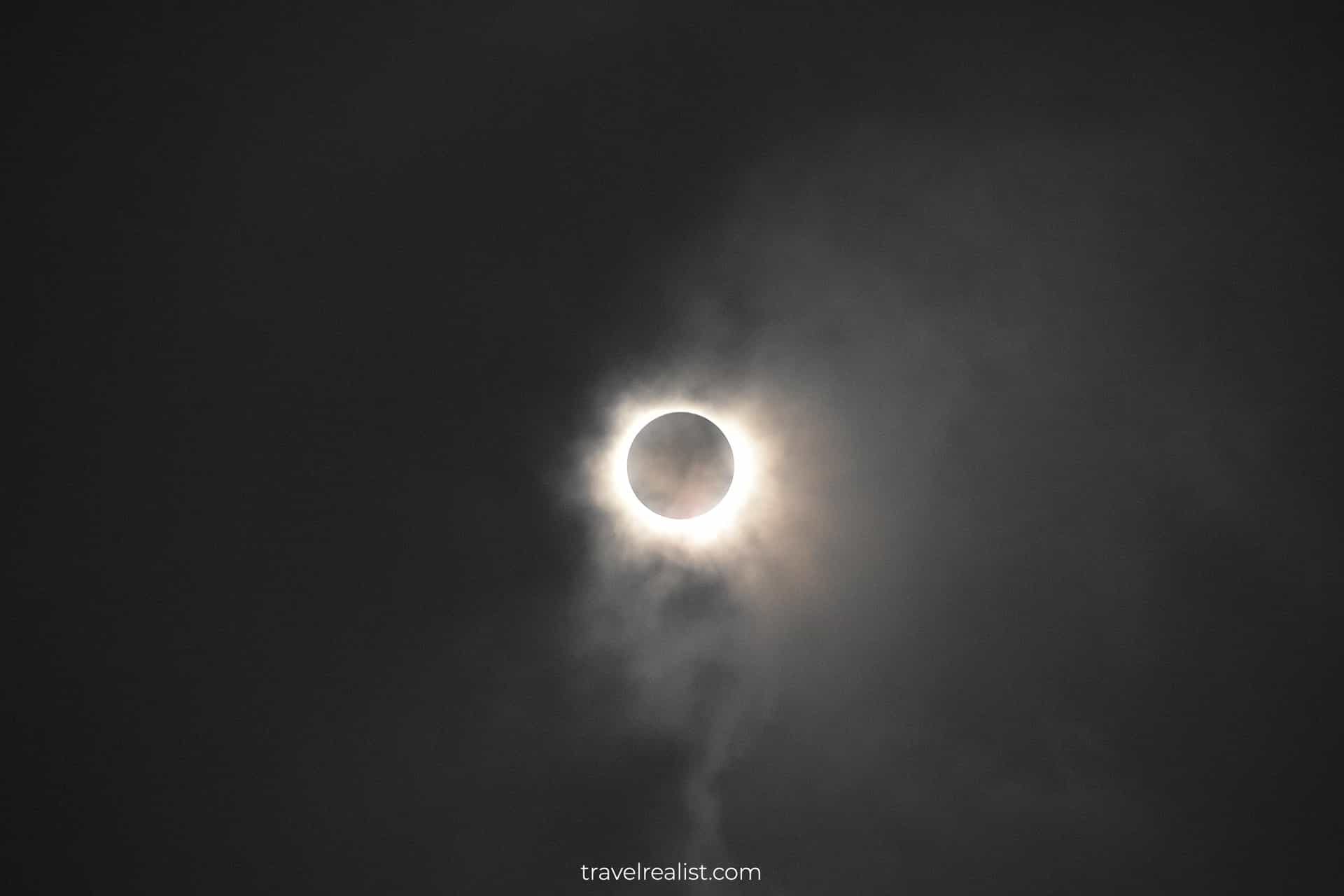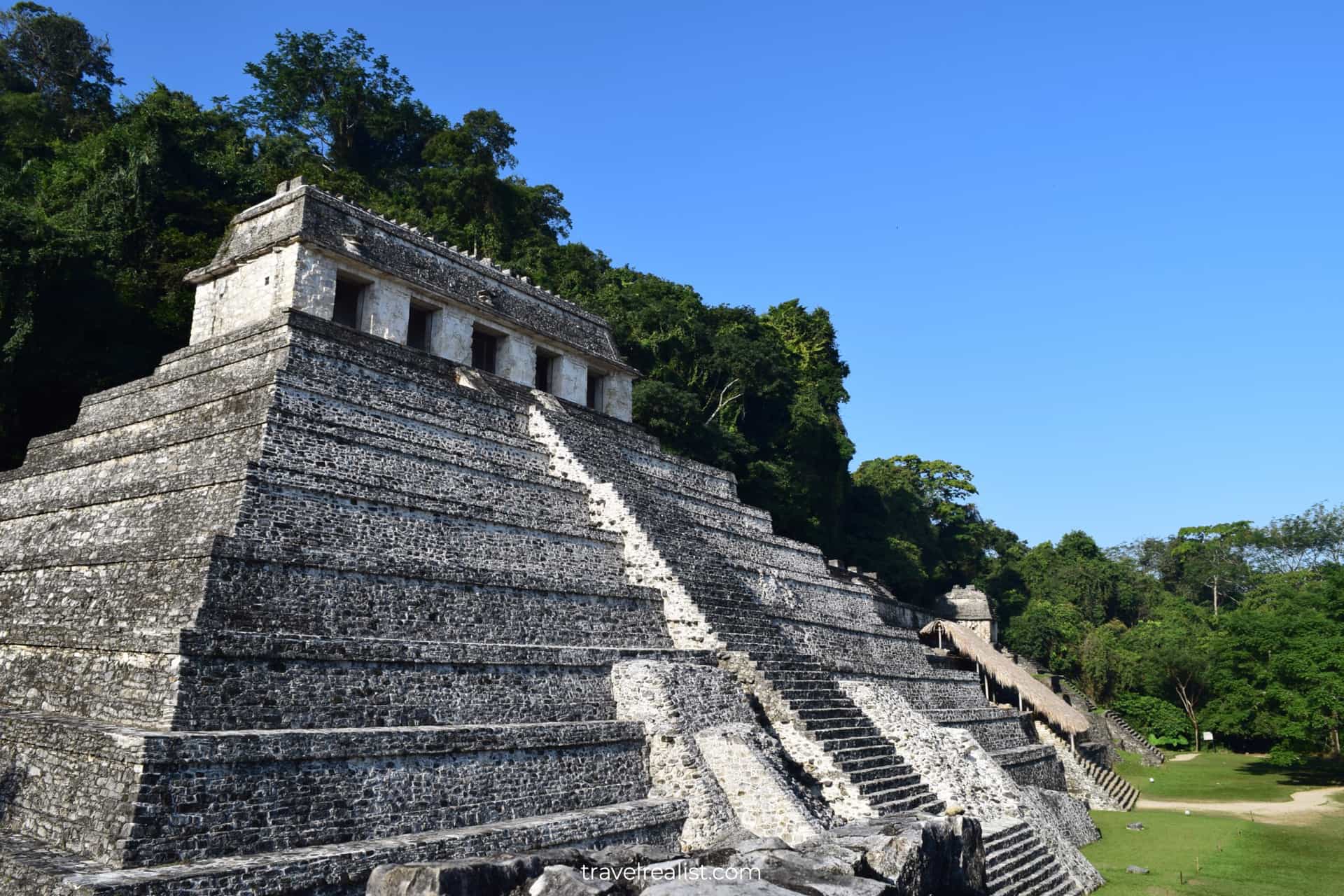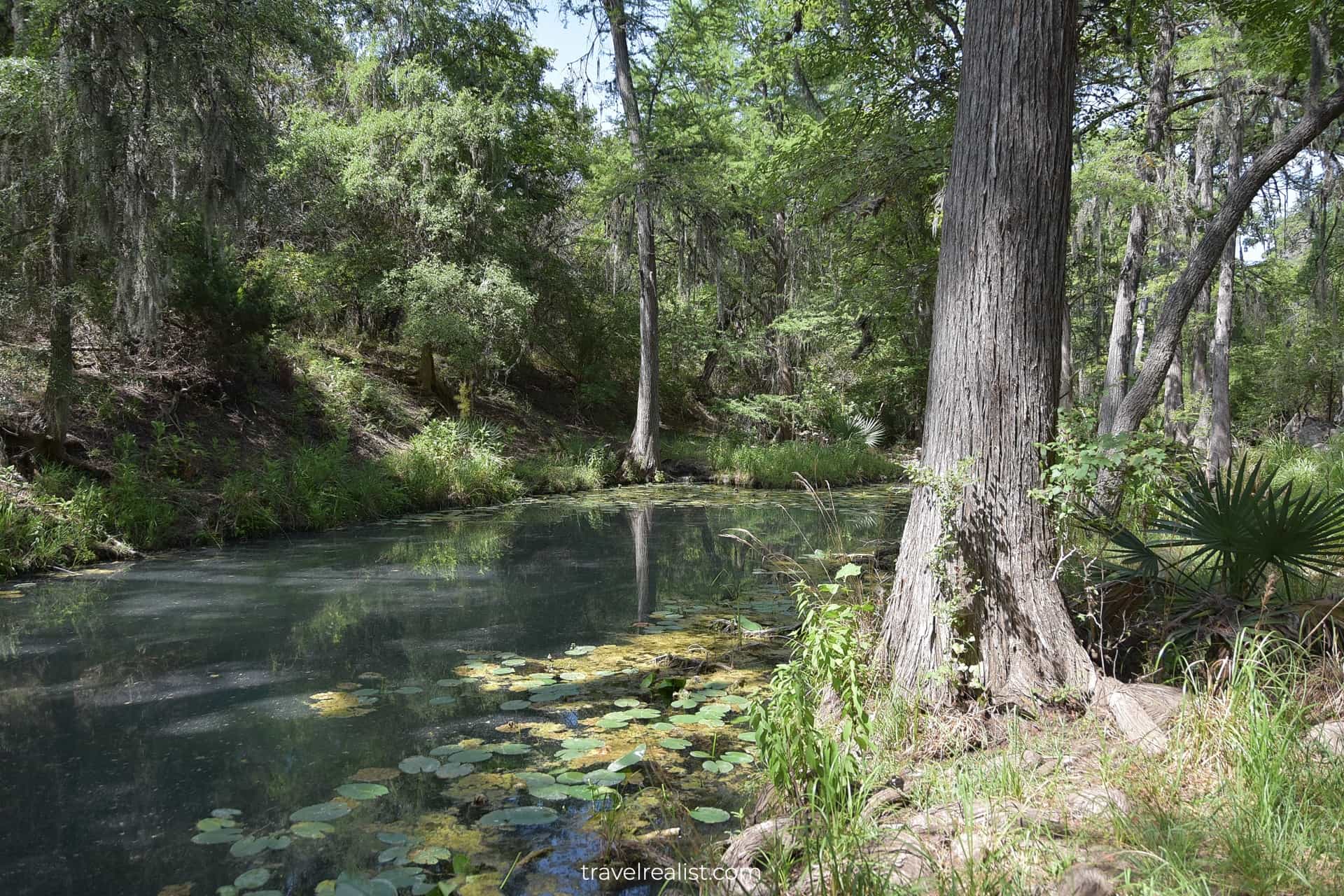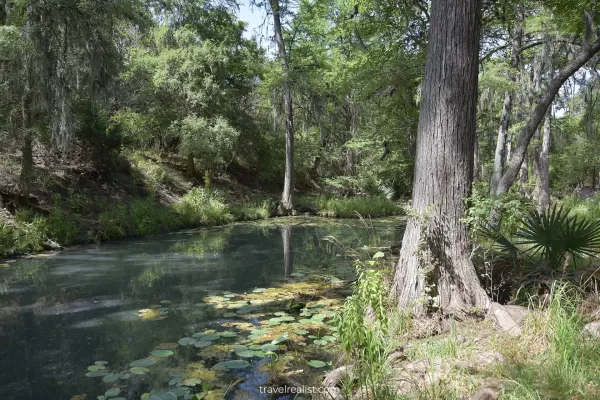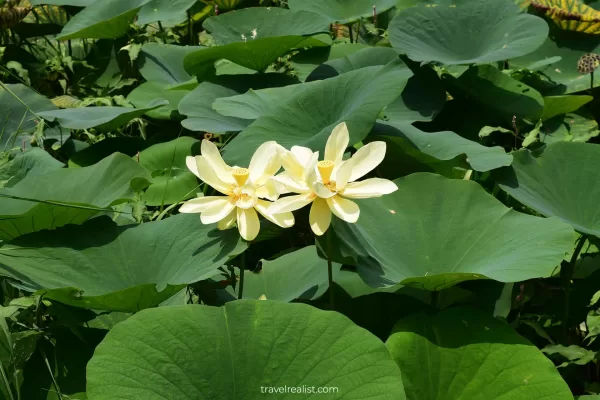Hawaii Volcanoes: World’s Second Largest Volcano
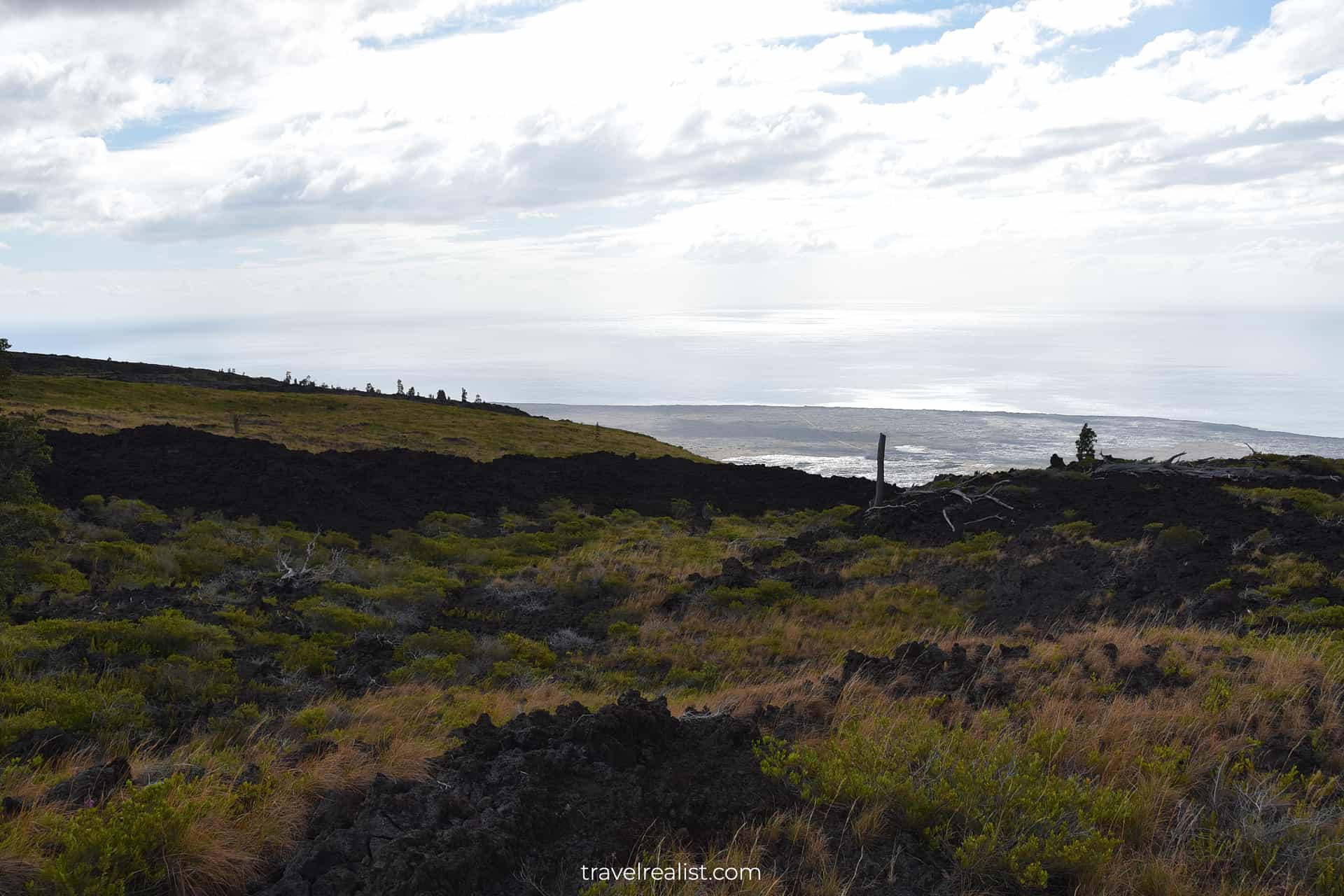
Hawaii Volcanoes National Park Guide
Use our realist Hawaii Volcanoes Guide to plan your next adventure in this national park. Hawaii Volcanoes National Park is a park on the Island of Hawaii. It preserves the active volcanoes of Kīlauea and Mauna Loa. The latter volcano is the second largest volcano on the planet. We visited Hawaii Volcanoes National Park during our winter trip to Hawaii.
Getting to Hawaii Volcanoes
Hawaii Volcanoes National Park is located in the southeastern part of the Big Island. You can reach this national park from either of the island’s two international airports. However, there are large difference sin distance and driving time. For instance, it takes just 45 minutes to reach the visitor center from Hilo, HI. Compare it to over 2 hours of driving time from Kona International Airport.
There is only one entrance to the park. Conveniently, it is just a turn from the Hawaii Belt Road (HI-11). You do not have to rent a car to reach Hawaii Volcanoes. There are several tours you could choose from if tours are your cup of tea. But a car rental could help you get to the park and explore it at your own pace.
Where to Stay
Choosing accommodation around Hawaii Volcanoes National Park has the same limitations as on the rest of the Big Island. It is probably best to explore this park when you have ways to roam around the island. While it is possible to visit the park from a resort, a close-by independent hotel or vacation rental might work better.
Volcano, HI is right next door to the national park’s entrance. It is also home to several vacation properties. Alternatively, you could look into staying in Hilo, HI. This way, you could take advantage of more options. You could also look for properties on the West Coast, especially if you are fine with the longer drive. Kailua-Kona, HI would provide you with the most abundant choice.
Entrance Requirements & Passes
Hawaii Volcanoes National Park charges admission fees. Unless you have an Interagency Annual Pass, you would need to pay $30 per vehicle. The America the Beautiful Annual Pass proved to be a great investment once again.
The park is open 24 hours a day every day of the year. However, certain sights might be closed during volcanic activity. For instance, the park suffered considerable damage during the lower Puna eruption in 2018. As a result, some attractions were closed for repairs during our visit. Our Hawaii Volcanoes Guide also describes the sights’ closures for visitor protection. The Mauna Loa eruption in November 2022 is an example of such precautionary closures.
Sights & Places of Interest
Hawaii Volcanoes is one of the two national parks in the state of Hawaii. As the name suggests, the majority of the park’s sights center around the two active volcanoes. The national park consists of two scenic drives, the Crater Rim Drive and the Chain of the Craters Road. Our Hawaii Volcanoes Guide describes the major sights along these scenic routes.
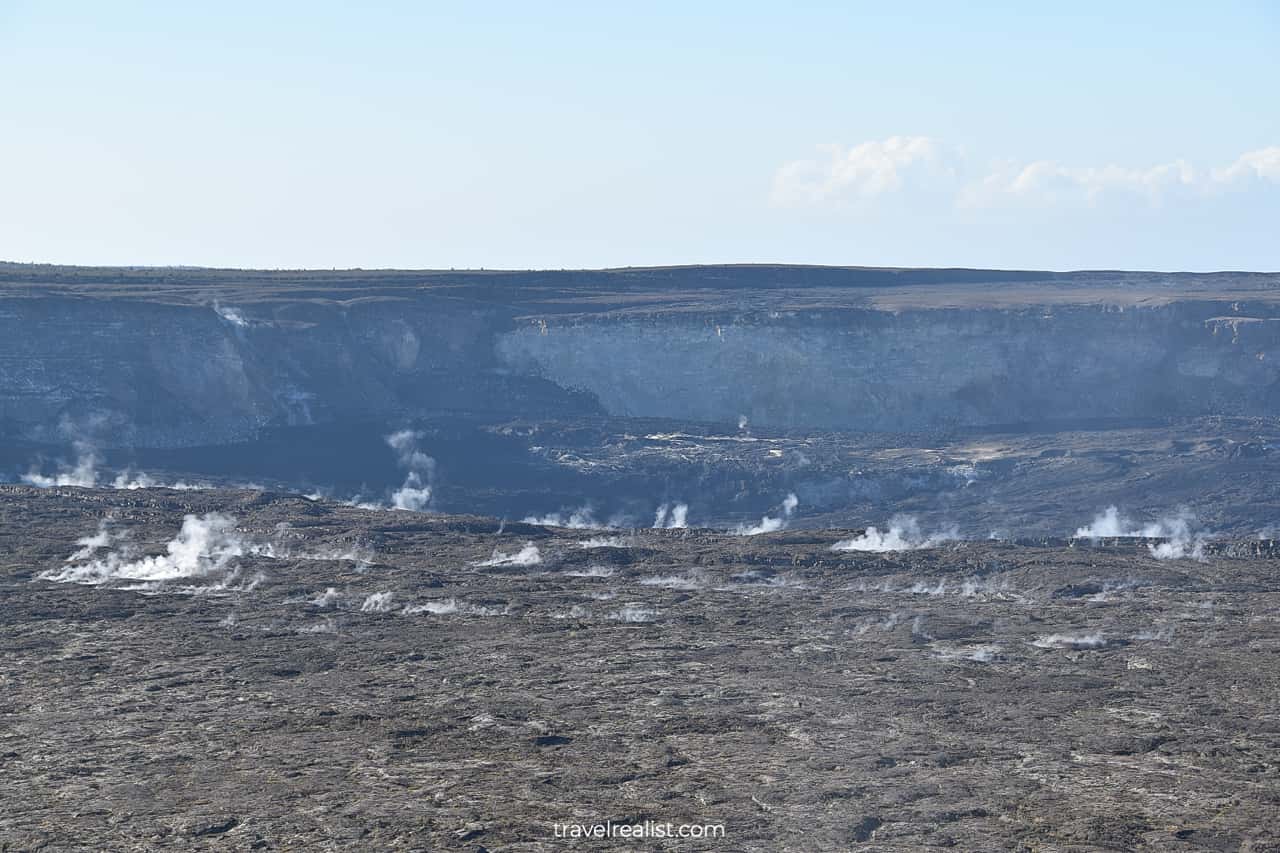
Crater Rim Drive
The Crater Rim Drive is one of the major attractions in the park. The drive is just minutes away from the Kīlauea Visitor Center. The Crater Rim Drive covers the western side of the crater. Unfortunately, we encountered the drive in a partially closed state. It was not a surprise since we could see steam coming from the ground. This sight reminded us of our experience in Yellowstone and Lassen Volcanic National Parks.
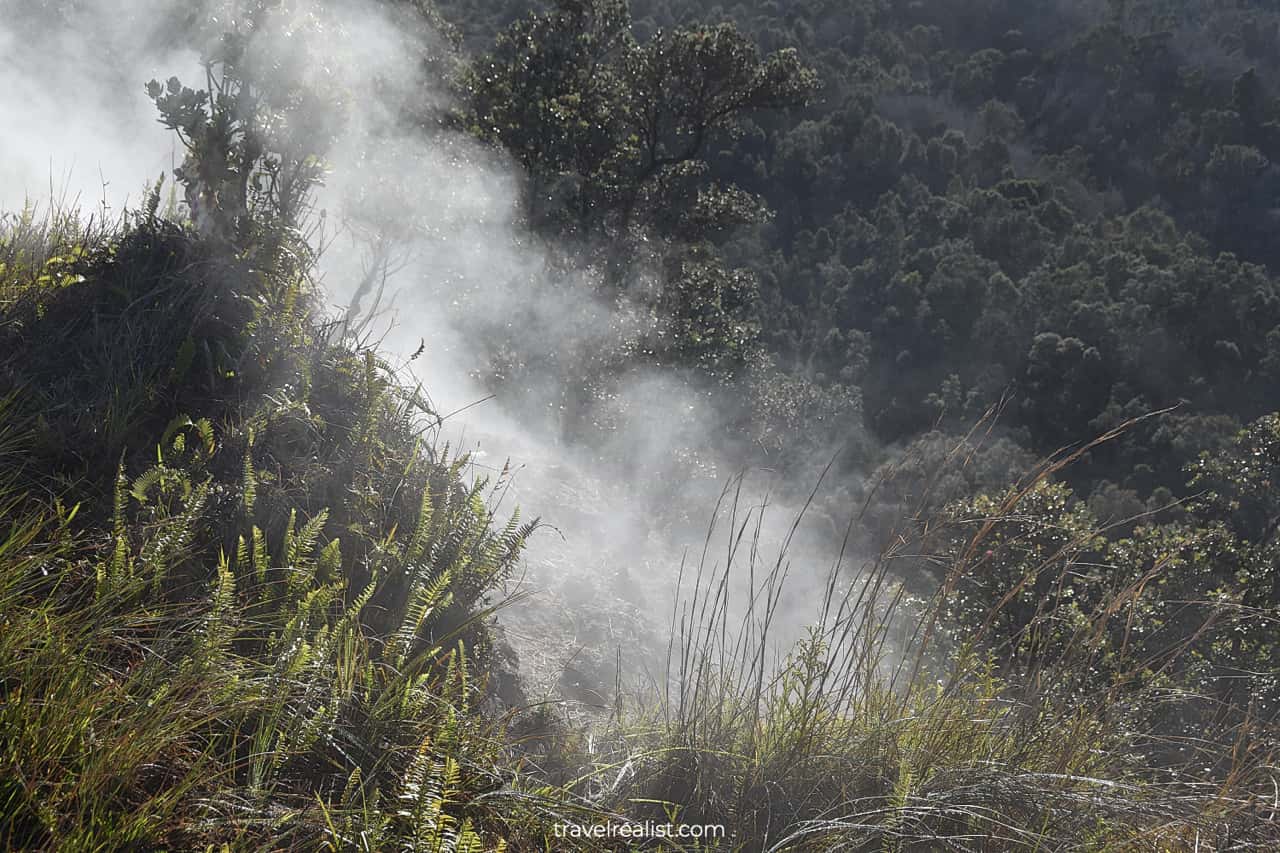
Chain of Craters Road
Nāhuku is another symbol of the park. Also known as Thurston Lava Tube, this trail provides a view of the 500-year old lava cave. The designated small trail parking lot tends to fill up. There are a couple of options if you encounter a full lot. First, you could consider extending your hike by parking at the nearby trailheads. Alternatively, you should plan on arriving at the Thurston Lava Tube outside the peak hours.
Unfortunately, the park restricted access to Thurston Lava Tube during our visit. We had to proceed to other, open areas of the park. As a result, we continued on the the Chain of Craters Road to the ocean shore.
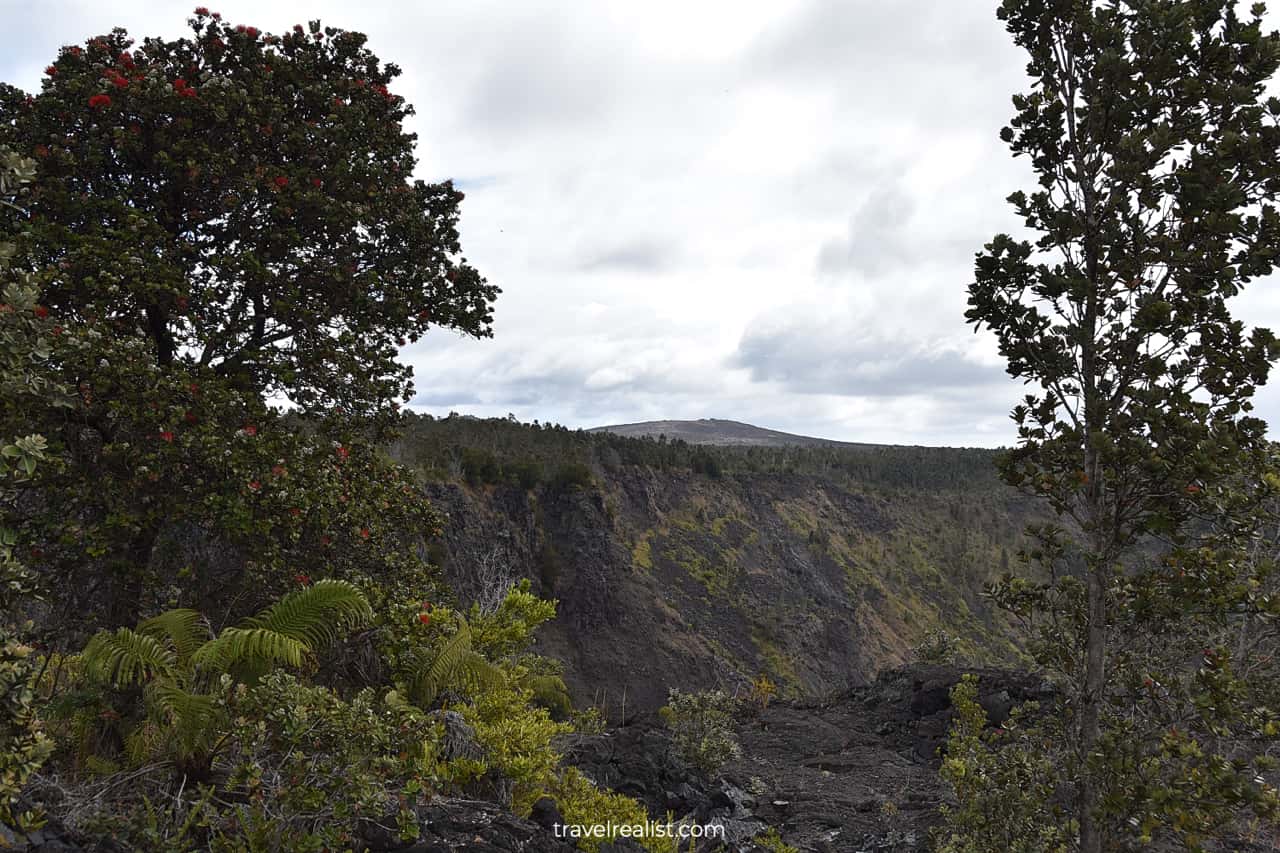
Pauahi Crater
The Chain of the Craters Road is a 38-mile (61-km) roundtrip drive. You should budget at least two hours to cover this distance and explore the sights. The first few miles between Nāhuku and Pauahi Crater proceed through a rainforest. This stretch of the road features a couple of overlooks and a hike to Pauahi Crater. We embarked on a short hike to reach this crater from the 1969 eruption. The trees and bushes mostly won over the area around this crater by the time of our visit.
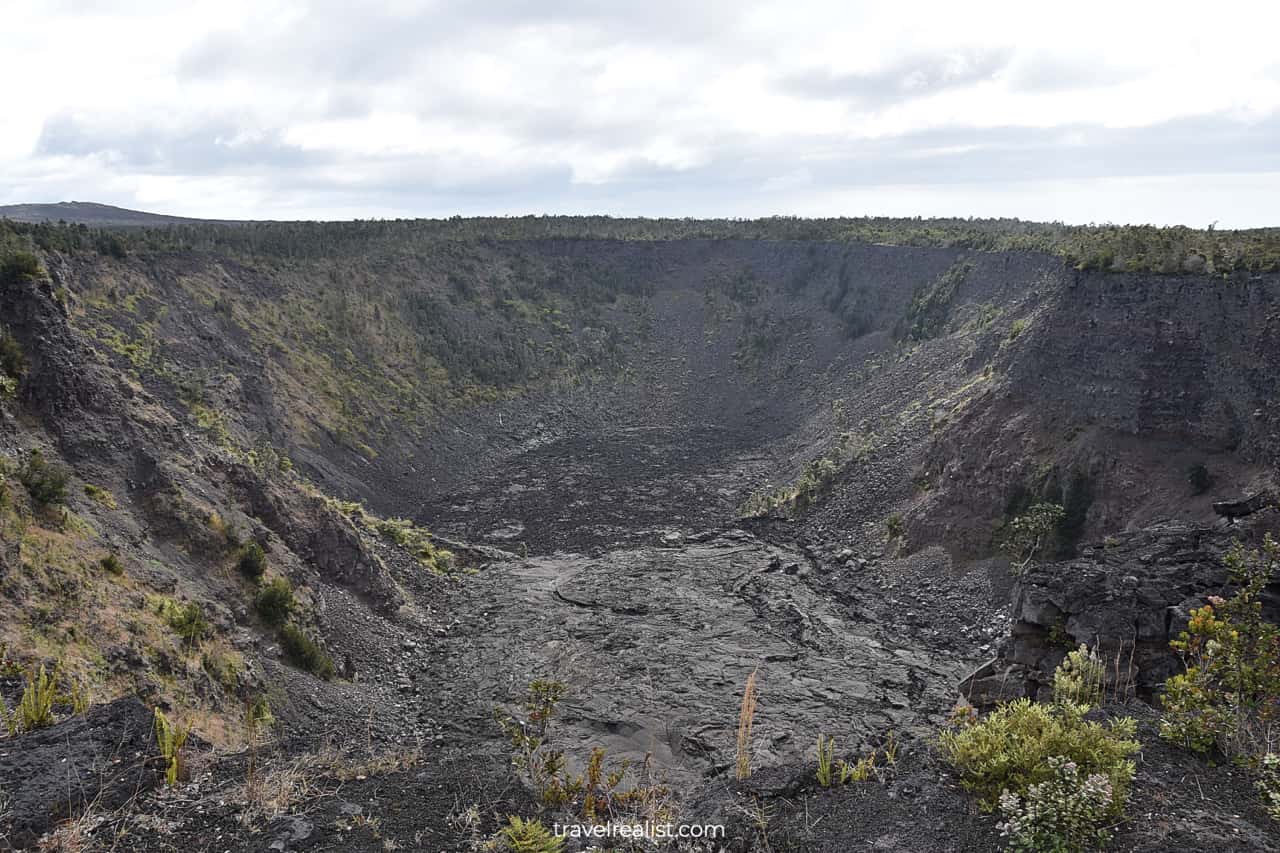
The Chain of Craters Road entered the lava fields once we passed the Pauahi Crater. Most of the overlooks between Pauahi Crater and Kealakomo featured similar lava bed views. They mostly differed in the road markers. These signs marked a year when a particular lava bed developed.
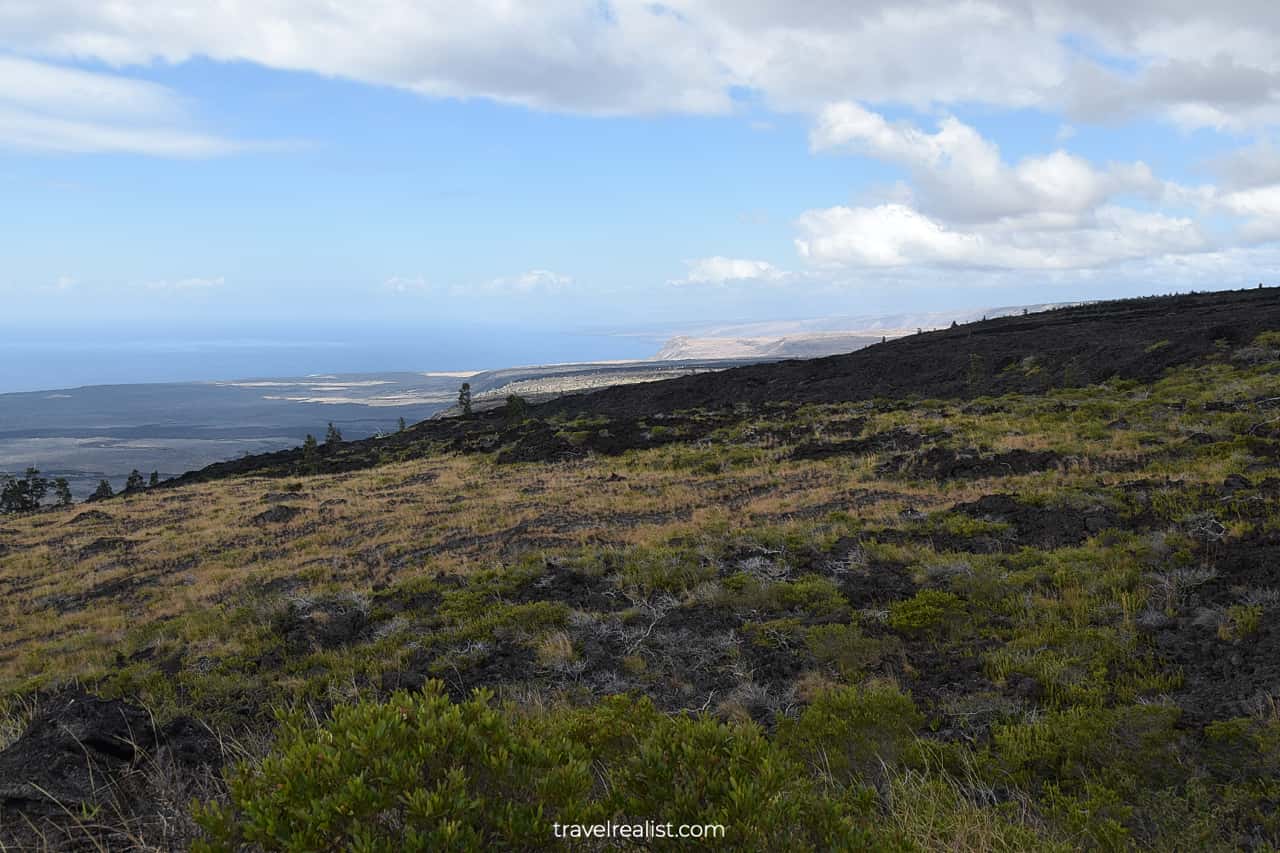
Kealakomo
The views changed once we arrived at Kealakomo. There we got a first good view of the Pacific Ocean.
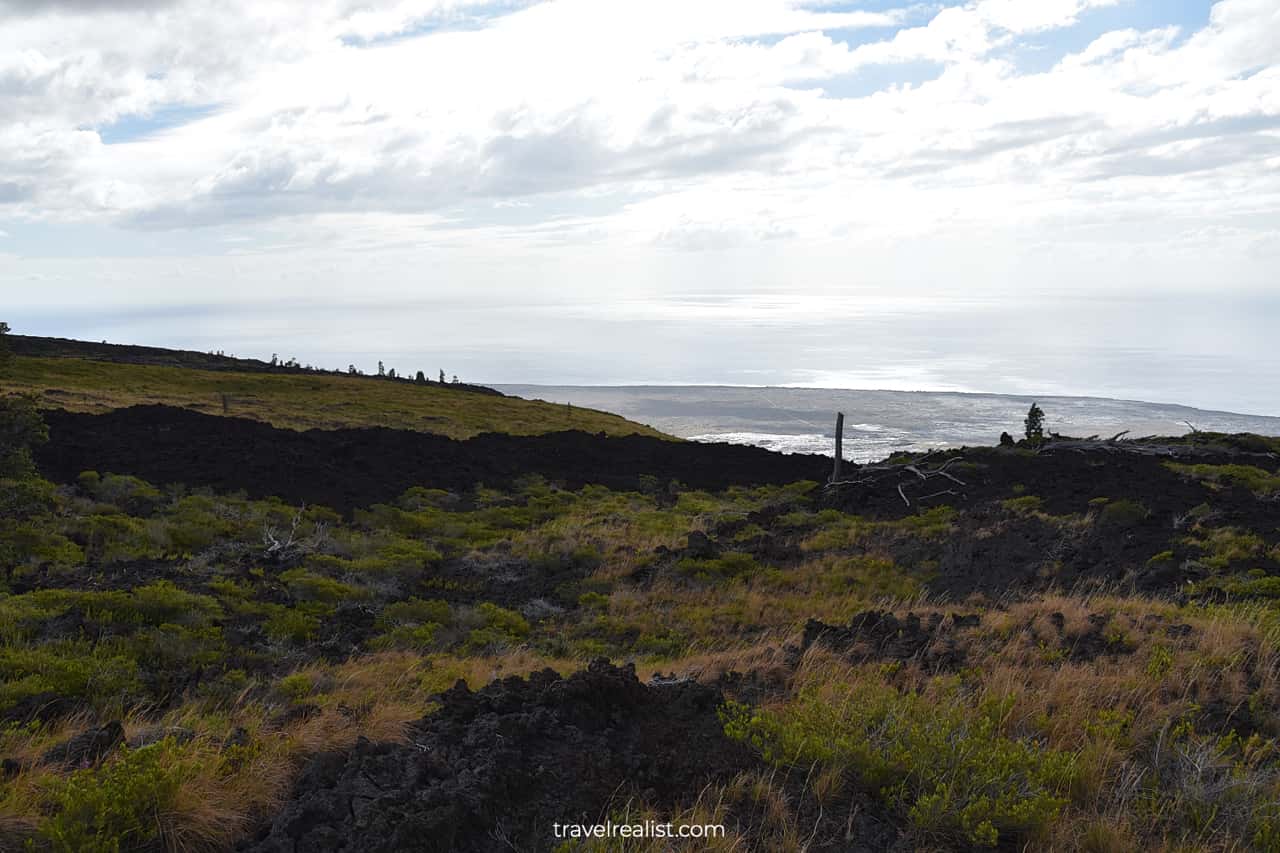
The Chain of Craters Road started to descend towards the ocean level. Not surprisingly, the ocean started to come into the view more and more prominently.
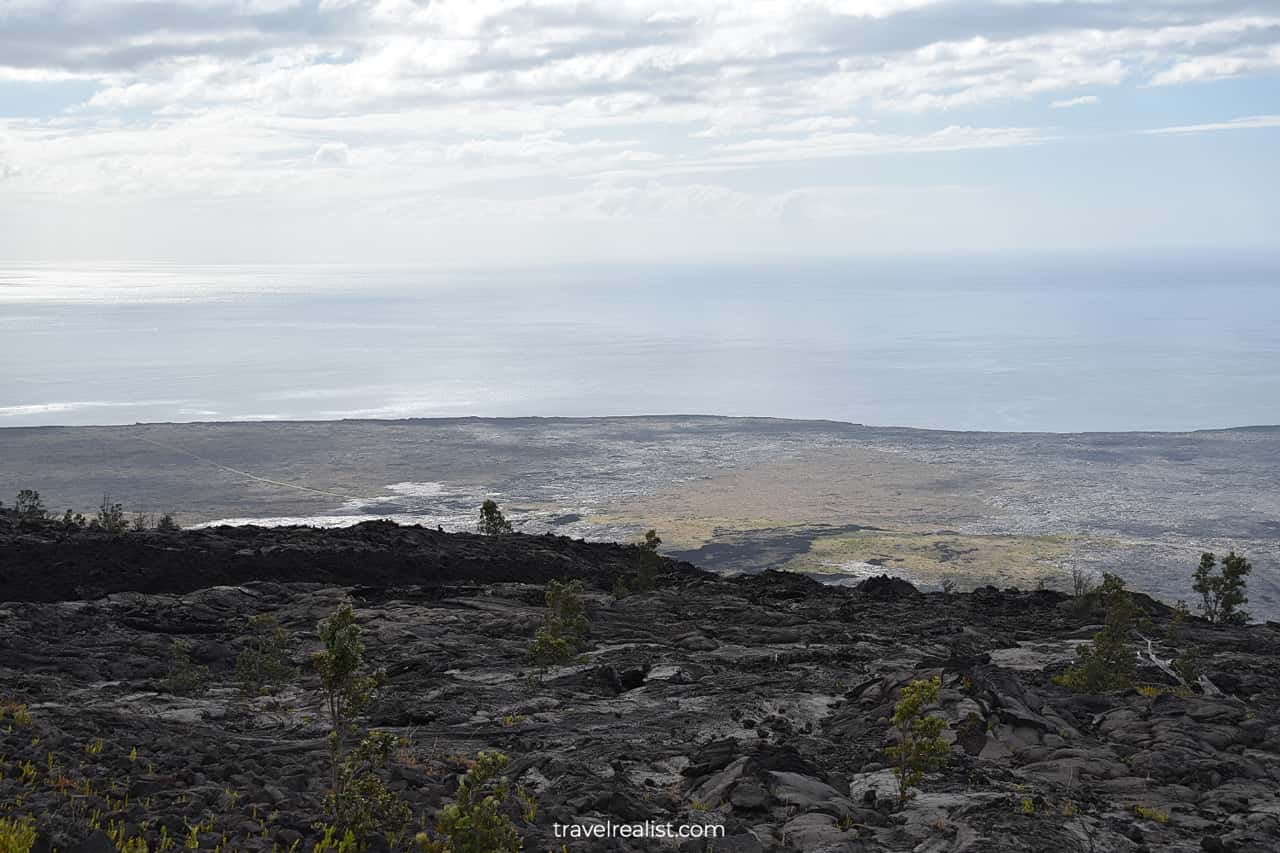
The scenery has a large resemblance to that of the Snæfellsjökull National Park in Western Iceland.
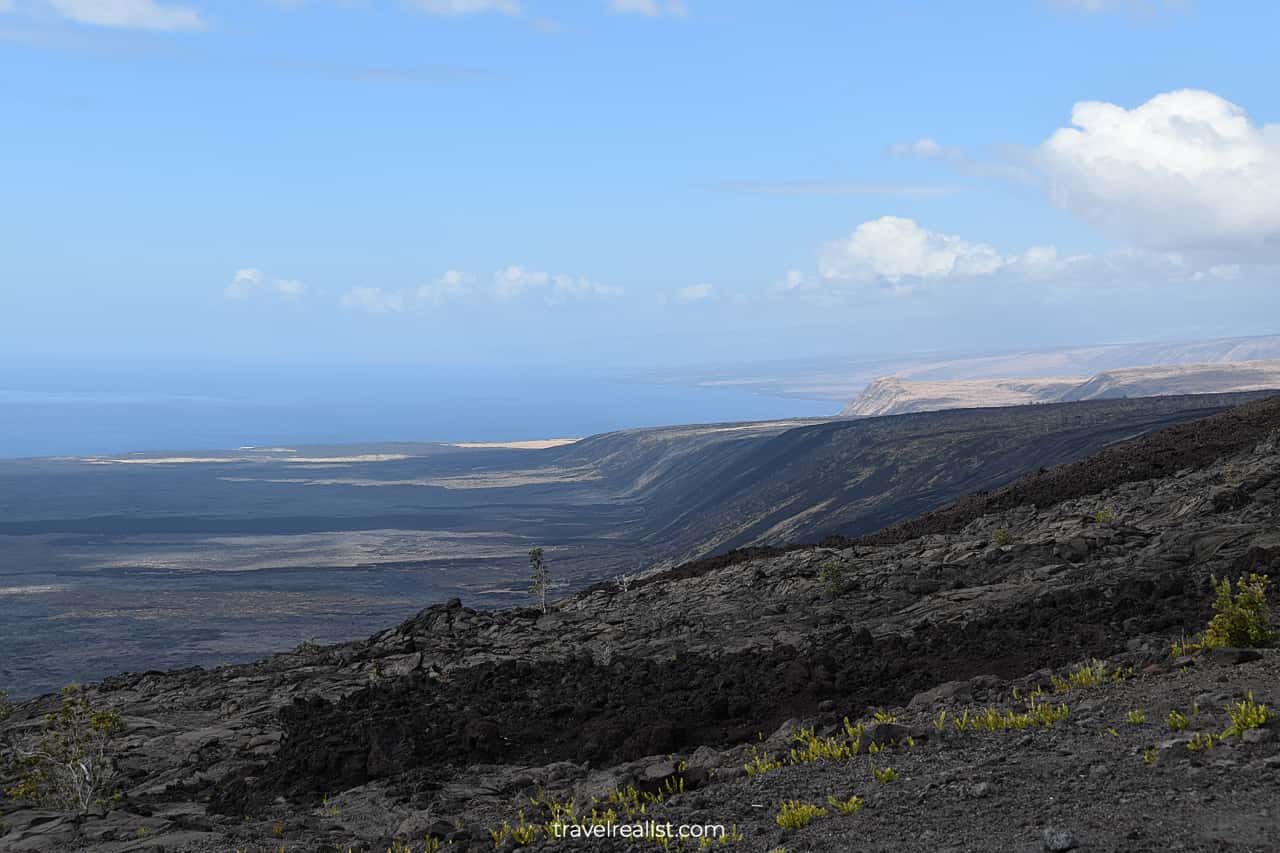
Lava covers most of the slopes around the Chain of the Craters Road.
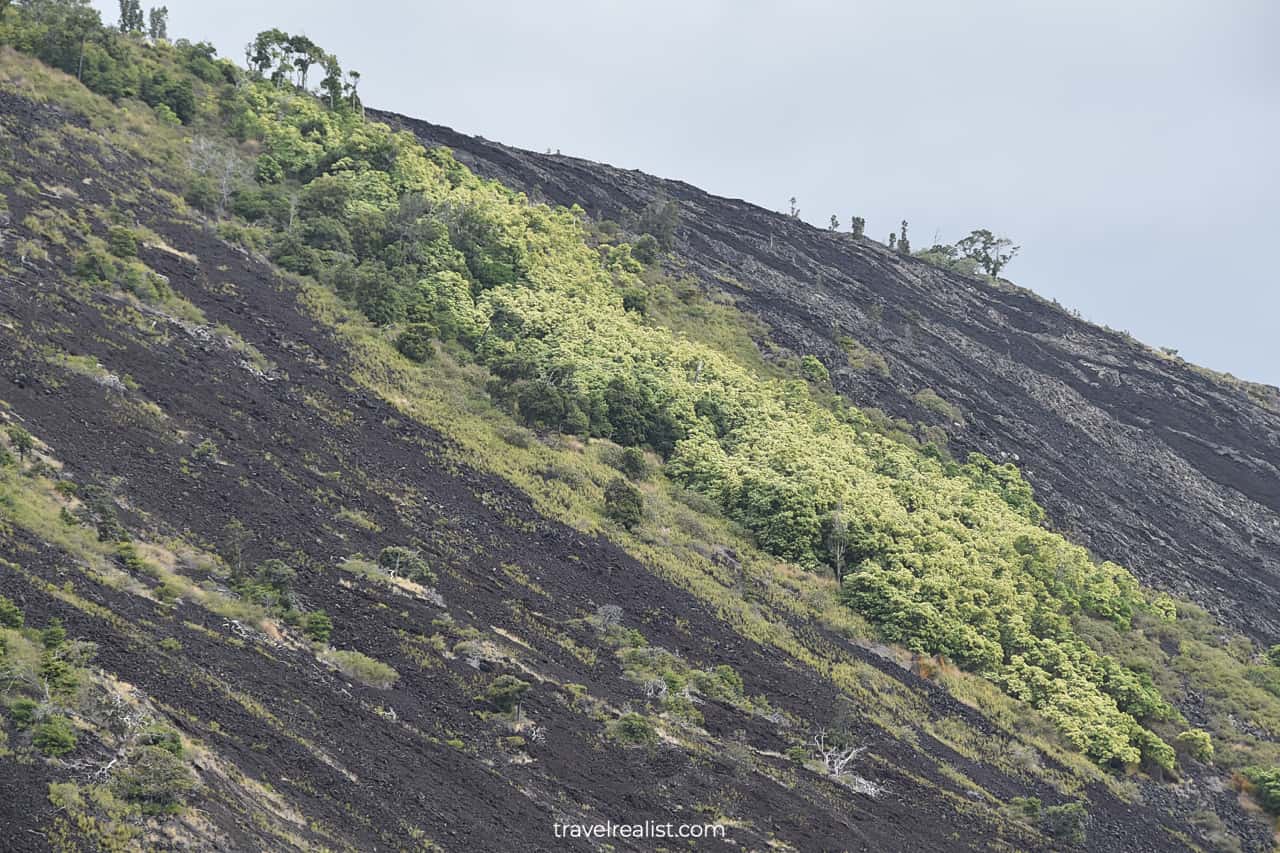
However, plants are growing directly in the lava beds. It is a surreal sight of the nature taking over these once devastated lands.
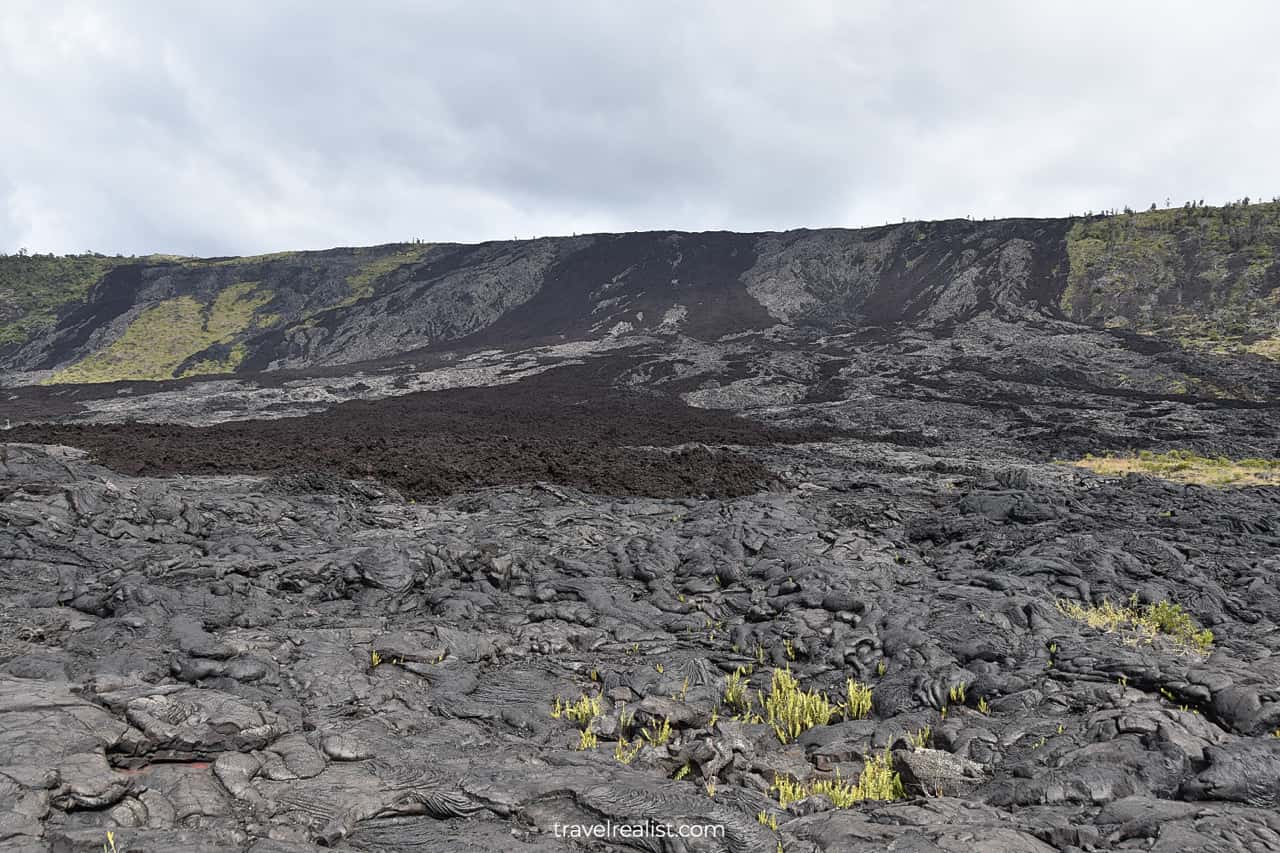
Old Chain of Craters Road
The road continued with few overlooks until we reached the Old Chain of Craters Road. This road is no longer in use since the 1972 eruption damaged it. You could still see the old pavement under a lava bed. Repairing the old road turned out to be dangerous. As a result, the National Park Service built a completely new stretch of the road.
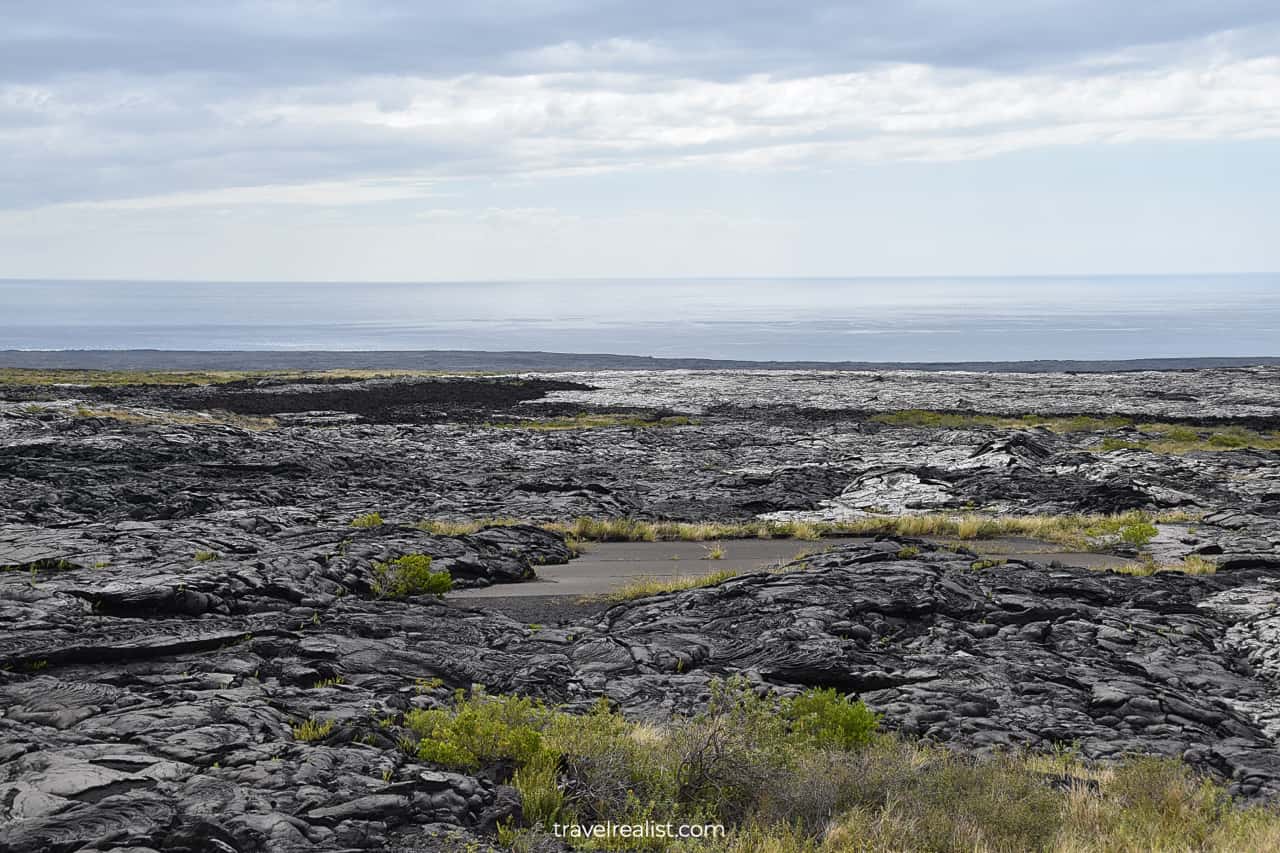
Pu’uloa Petroglyphs
Once we passed the Pu’uloa Petroglyphs, we reached the end of the road. The Chain of Craters Road used to connect the park with the community in Kalapana, HI. However, several eruptions in the last quarter of the 20th century badly affected the pavement. Nowadays, the road is only used as an emergency route.
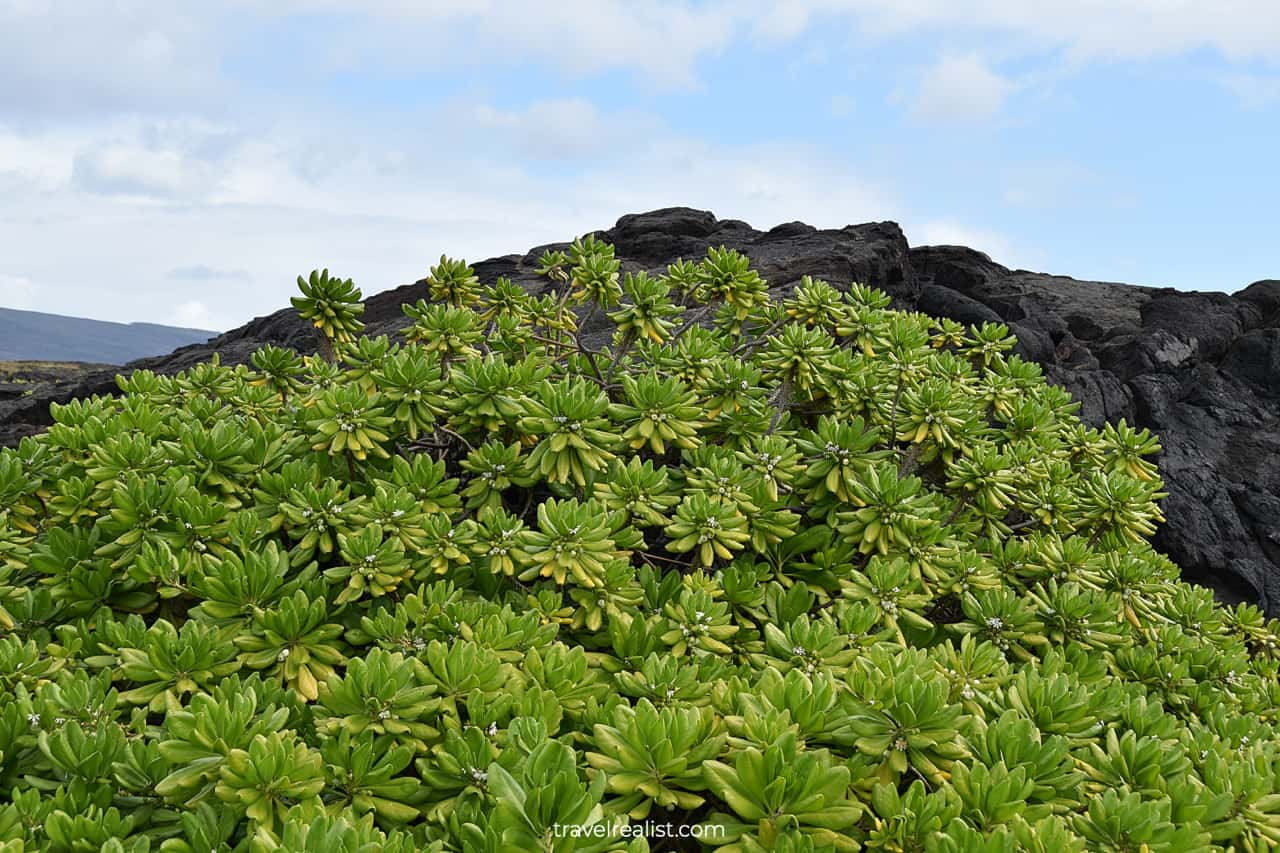
Hōlei Sea Arch
The Hōlei Sea Arch is the main attraction in this park section. The arch is without a doubt an impressive natural formation. Its views are well worth the drive. But the arch formation is not unique to this national park. Many volcanic areas feature such formations. For instance, we saw a similar arch at the Kirkjufjara Beach in Southern Iceland.
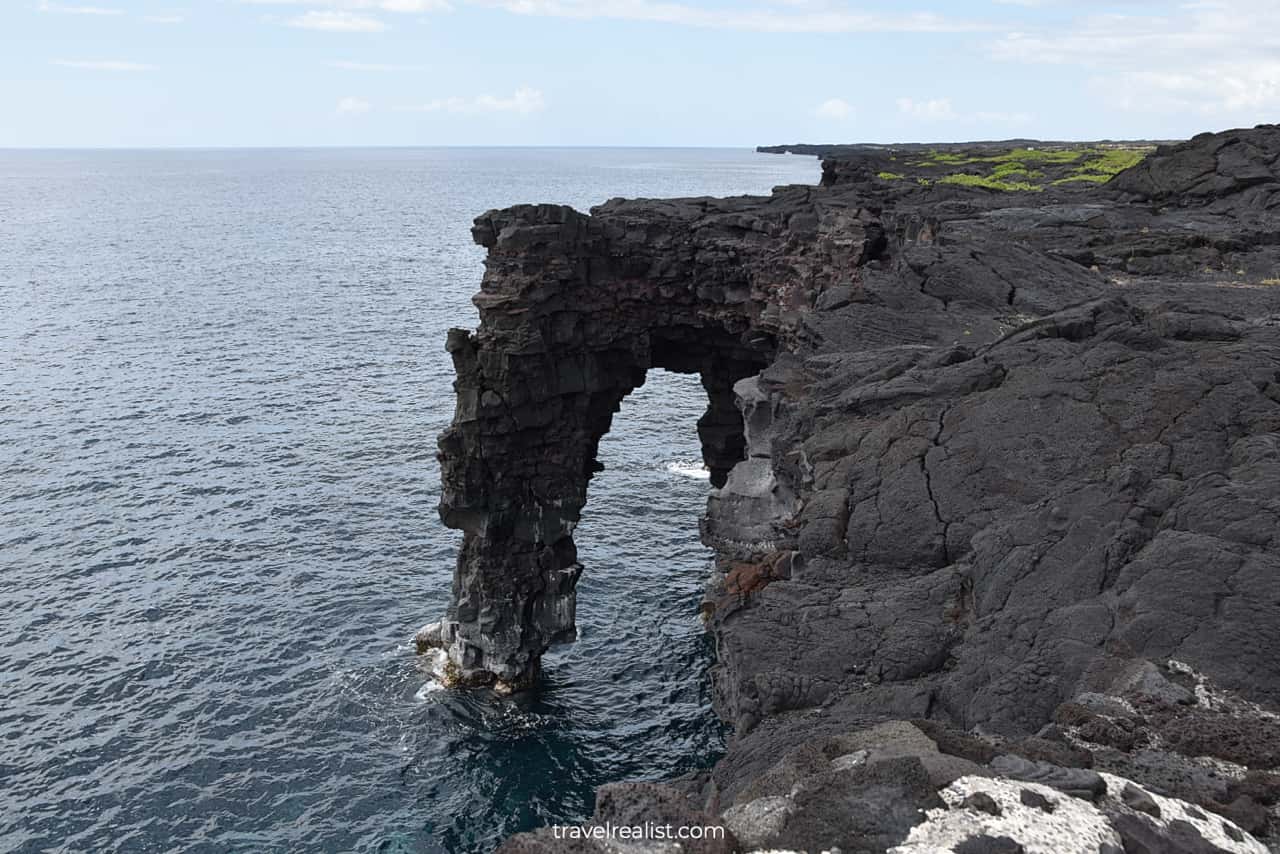
The rugged shore near the arch is also worth exploring. It displays how hot lava entered the ocean. The temperature clash solidified the flow. And now we could study and admire the results of these forces of nature.
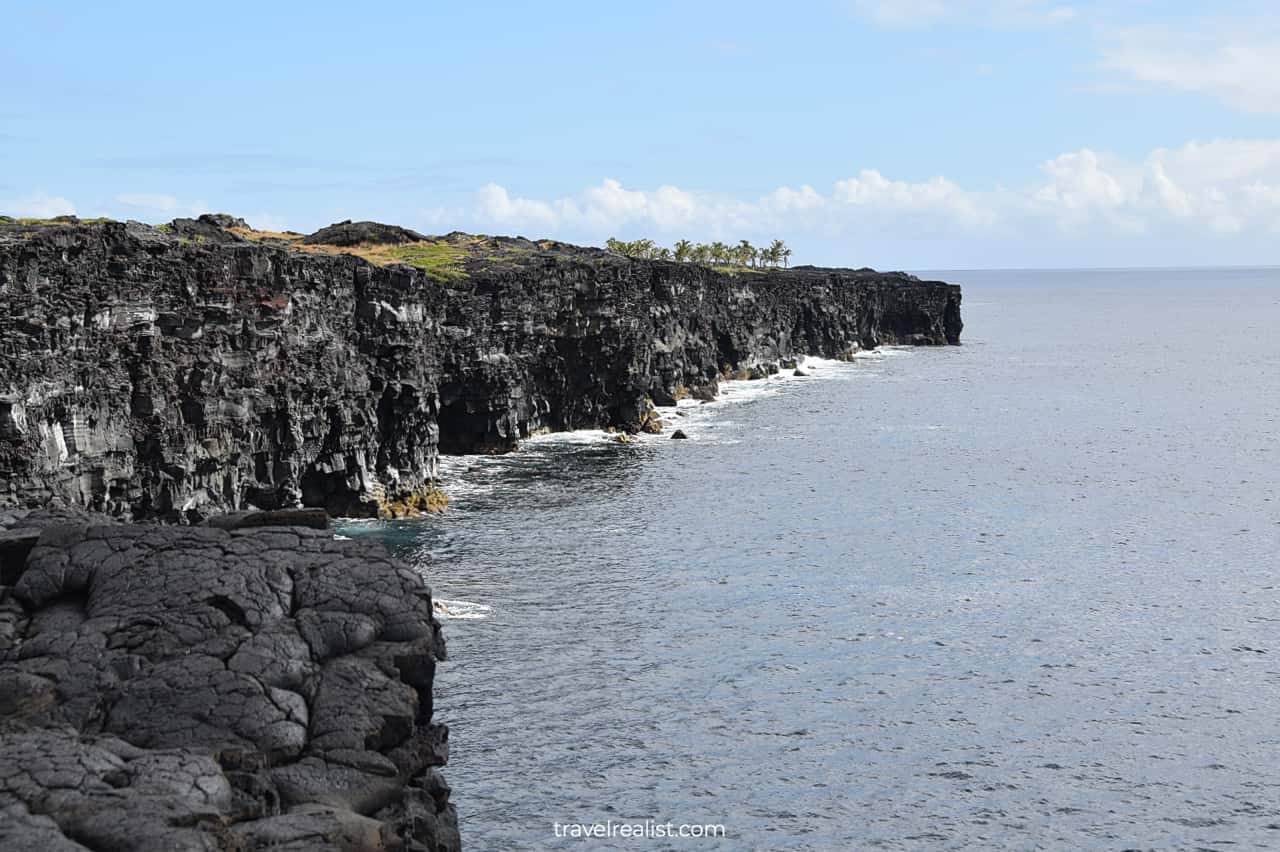
The hiking trails are the only other attraction in this section. Serious hikers could consider taking some of the park’s trails. For instance, the 6.6-mi (10.6-km) Puna Coast Trail would bring hikers to the ‘Āpua Point. There is also a way to reach Hilina Pali Overlook. But that involves a hike of over 20 miles (32 km).
We were not prepared to embark on such a long hike that day. And, since the Chain of the Craters Road does not have an outlet, we had to return via the same route. We passed all the major sights on our way back.
Takeaways: Hawaii Volcanoes
Hawaii Volcanoes National Park is a great educational destination. It allows visitors to experience the consequences of the geological processes first hand. It was a bit disappointing to encounter so many site closures. But safety comes first. Overall, we did not regret the time spent in the park. Besides, it helped to set the right expectations for visiting Hawaii Volcanoes. We knew that we were unlikely to see a hot lava stream in the park. Nevertheless, we could explore the park’s overlooks and formations.
Take a look at our Hawaii Volcanoes Video Guide and visit our YouTube channel for the latest videos.
Frequently Asked Questions
There are 5 volcanoes on the Island of Hawaii.
Hawaii Volcanoes are a great educational destination to see the natural forces.
The National Park charges $30 per vehicle unless you have an annual pass.
You do not need a reservation to visit this national park. It might still be a good idea to visit the park outside of peak hours to avoid crowds.
You should budget about two hours to drive the Chain of the Craters Road.
A self guided tour is the easiest option to explore Hawaii Volcanoes National Park.
Safe realist travels!

